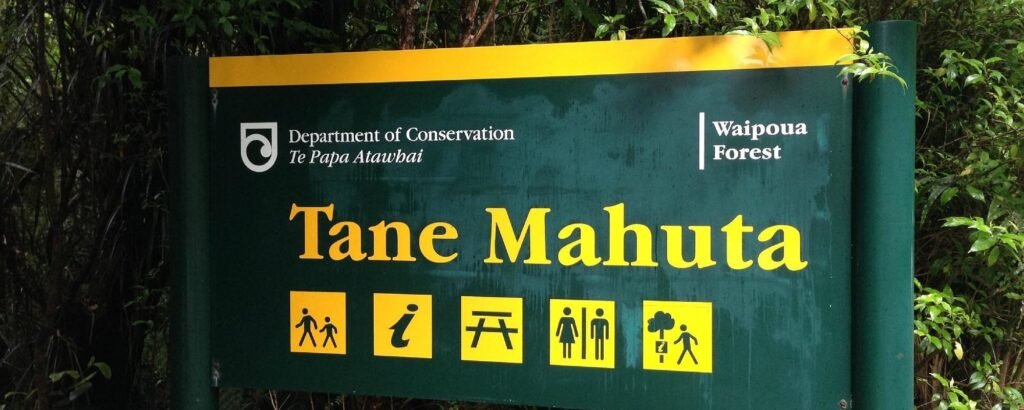
Northland’s kauri forests are living cathedrals — ancient, towering, and filled with wairua (spirit). Walking beneath their canopy is like stepping into another world, where time slows and the forest speaks through rustling leaves and birdsong. At the heart of this experience is Waipoua Forest, home to the largest living kauri of them all: Tāne Mahuta, the “Lord of the Forest.”
Tāne Mahuta – Lord of the Forest
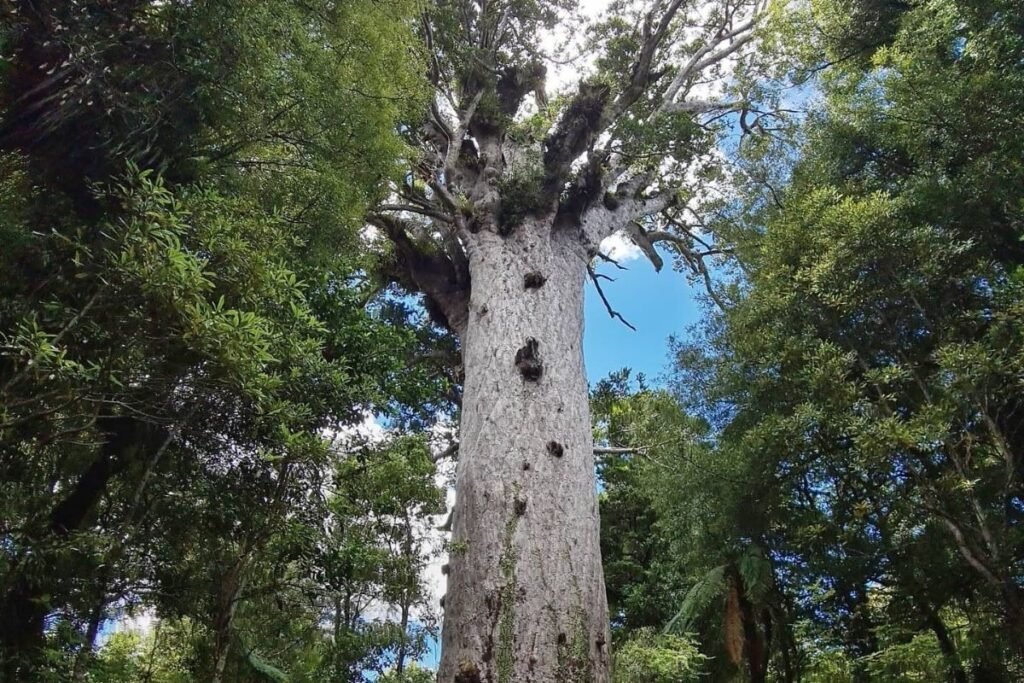
Standing over 50 metres tall with a trunk girth of more than 13 metres, Tāne Mahuta is thought to be over 2,000 years old. In Māori tradition, Tāne is the god of the forest, who separated Ranginui (the Sky Father) and Papatūānuku (the Earth Mother) to bring light into the world. The great kauri that bears his name embodies this story — a guardian of life and light.
Visiting Tāne Mahuta is a deeply spiritual experience. Interpretive signs share the ecological and cultural stories of the kauri and you can feel the reverence in the quiet hush around its base. Nearby boardwalks also lead to other notable trees such as the Four Sisters and Yakas Kauri, offering glimpses into the forest’s ancient power.
Protecting the Kauri – Kauri Dieback
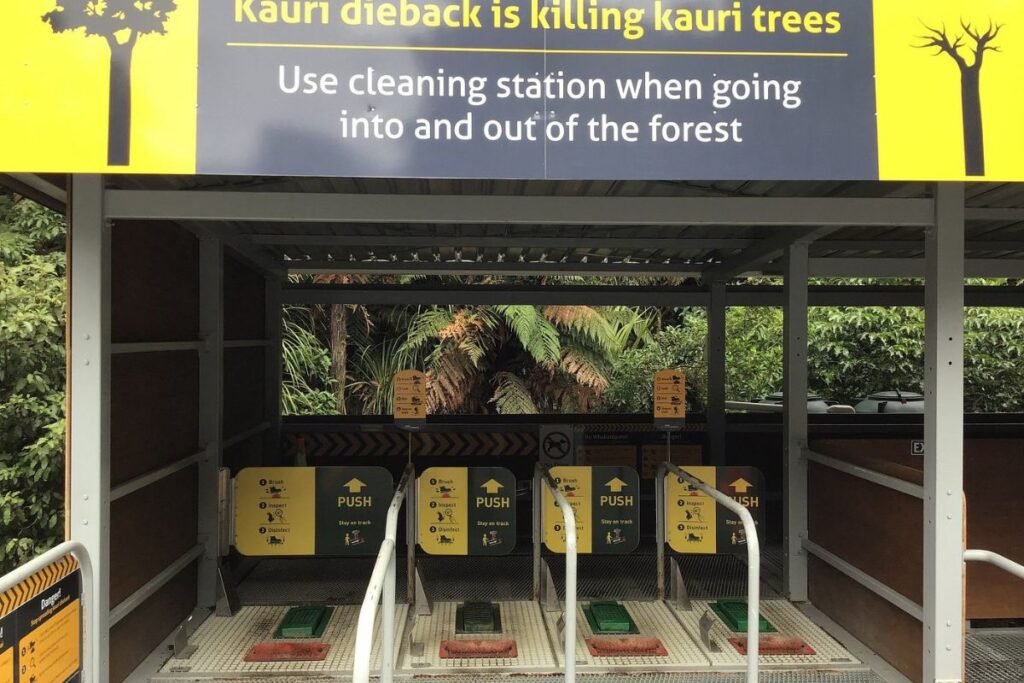
Northland’s kauri are treasures of immense cultural and ecological value but they are under serious threat from kauri dieback disease. This soil-borne pathogen infects the roots and can kill even the largest, oldest trees. Once infected, there is no cure.
To help protect these giants for future generations:
- 🧼 Always use cleaning stations at track entrances and exits — scrub your shoes, walking poles and any gear that touches the ground.
- 🚶 Stay on the boardwalks and tracks — even a small step off-trail can spread contaminated soil.
- 🐕 Keep dogs on leads and away from kauri roots.
- 🙏 Respect signage and closures — some tracks are closed to limit the spread of the disease.
Ōpononi, Ōmāpere & Rawene
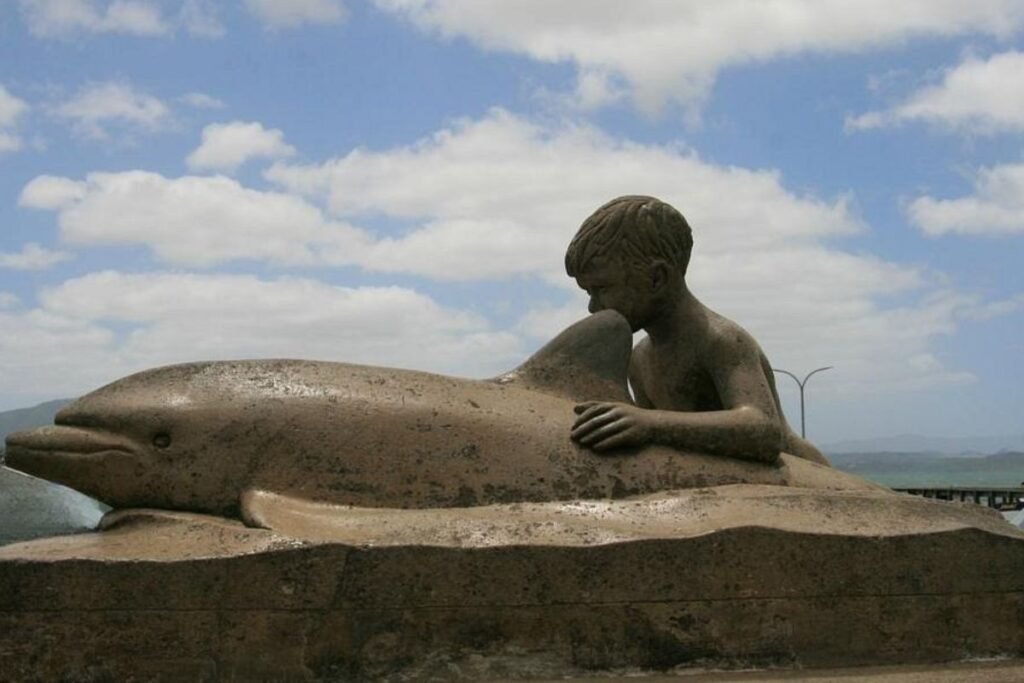
Northland’s west coast has a charm all its own, with harbour towns that tell stories of the past and offer peaceful places to pause.
- Ōpononi & Ōmāpere: These twin towns sit on the edge of the Hokianga Harbour, just north of Waipoua Forest. Ōpononi became famous in the 1950s thanks to Opo the Dolphin, a wild dolphin that played with children in the harbour and captured the nation’s heart. Today, Ōpononi and Ōmāpere are laid-back coastal communities with wide sandy beaches, friendly locals and stunning sunsets over the harbour.
- Rawene: One of New Zealand’s oldest European settlements, Rawene is a small harbour town with historic wooden buildings, local art galleries and cafés. From here, travellers can take the Rawene to Kohukohu ferry across the harbour — a scenic shortcut that links the west coast to the Far North. It’s a journey back in time, with the slow pace of life and harbour views making it a favourite stop for many.
Getting There & The Journey
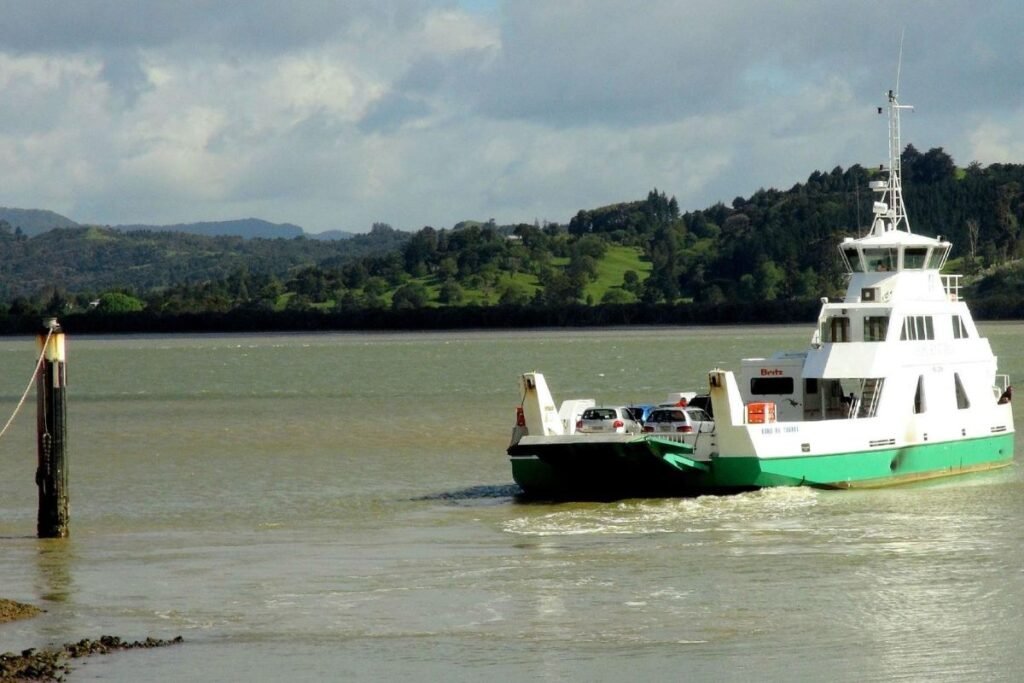
Reaching Waipoua Forest is as much a part of the adventure as the forest itself.
- 🚗 From the south: Turn off State Highway 1 at Brynderwyn and follow the road toward Dargaville. This small riverside town makes a handy stop for fuel, food and exploring local history — including the Kaipara Harbour, once a busy timber port. From here, continue north along State Highway 12 into the heart of the Waipoua Forest.
- 🐬 Ōmāpere & Ōpononi: Just north of the forest you’ll reach these twin harbour towns on the Hokianga. Ōpononi is famous for Opo the Dolphin, who charmed locals and visitors in the 1950s. Today, the towns are peaceful places to stay with stunning harbour views.
- ⛴️ Rawene Ferry: For a scenic detour, cross the Hokianga Harbour on the Rawene to Kohukohu ferry. From here you can loop north — either skirting the coast toward Ahipara and 90 Mile Beach, or crossing the rugged Mangamuka Ranges to rejoin the main route to Cape Rēinga.
- 🌿 Alternative loop: Travellers can also cut back across the Far North toward Kerikeri, making Waipoua Forest a central stop in a broader Northland circuit.
Need to Know – Waipoua Forest
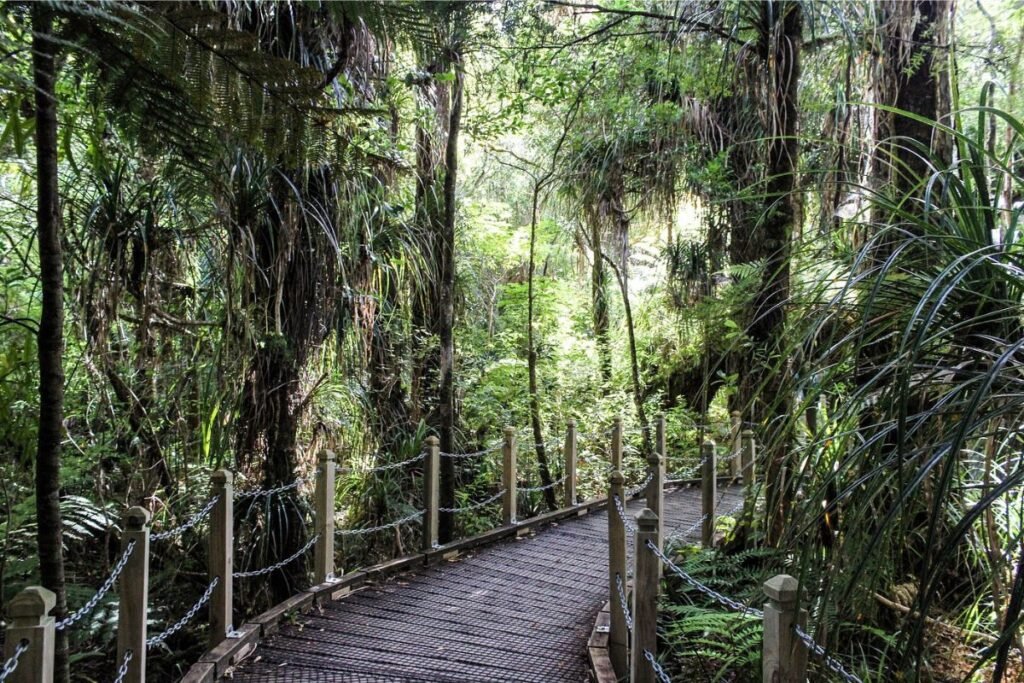
- 📍 Location: On State Highway 12, between Dargaville and Ōmāpere
- 🚗 Parking: Free carparks at trailheads (Tāne Mahuta, Four Sisters, Yakas Kauri)
- 🚶 Walks:
• Tāne Mahuta – 5–10 mins on a flat boardwalk
• Four Sisters – 10 min return
• Yakas Kauri – 45 min one way (longer, less visited) - 🧼 Kauri dieback stations: Use them every time you enter or leave a track — scrub and spray your shoes thoroughly
- 🕒 Best time: Early morning or late afternoon for fewer crowds and softer light for photos
- 🌿 What to bring: Comfortable shoes, water, insect repellent and a camera
- ⚠️ Respect: Stay on boardwalks, never step over kauri roots and follow any track closures
“Ko te wai te ora o ngā mea katoa — Water is the life giver of all things.”
Just as water sustains life, so too does respect sustain the forest.